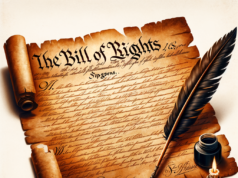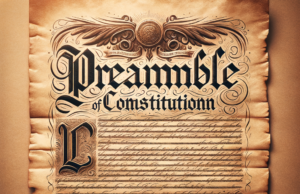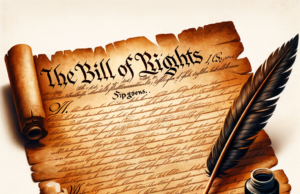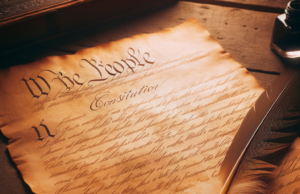Table of Contents

A Guide to Constitutional Amendments
Introduction
Constitutional amendments are a fundamental component of the United States Constitution. They allow for the document’s adaptation to changing societal needs, evolving values, and unforeseen circumstances. The process of amending the Constitution is deliberate and challenging, reflecting the importance of ensuring that any changes align with the principles upon which the nation was founded. In this guide, we will explore the process of amending the Constitution, historical amendments, and the significance of this essential constitutional tool.
The Amendment Process
Article V of the U.S. Constitution outlines the process for amending the document. It provides two methods for proposing and ratifying amendments, both of which require significant levels of approval:
1. Proposal:
– Congress: Amendments can be proposed by a two-thirds majority vote in both the House of Representatives and the Senate.
– Constitutional Convention: An amendment can be proposed if two-thirds of state legislatures call for a national convention to discuss and draft amendments. However, this method has never been used.
2. Ratification:
– State Legislatures: Amendments may be ratified by three-fourths (38 out of 50) of state legislatures.
– Constitutional Conventions: Alternatively, states can choose to ratify an amendment through conventions specially convened for this purpose.
Historical Amendments
The U.S. Constitution has been amended 27 times since its adoption in 1787. These amendments have addressed various issues, ranging from individual rights and governance to social justice and electoral matters. Some of the most significant amendments include:
1. The Bill of Rights (Amendments 1-10): These amendments, ratified in 1791, protect fundamental individual liberties, such as freedom of speech, religion, and the press, as well as the right to bear arms and protections against unreasonable searches and seizures.
2. The 13th Amendment (1865): Abolished slavery in the United States, marking a profound shift in the nation’s history and values.
3. The 19th Amendment (1920): Granted women the right to vote, significantly expanding the scope of American democracy.
4. The 22nd Amendment (1951): Limited presidents to two terms in office, preventing the accumulation of excessive executive power.
5. The 26th Amendment (1971): Lowered the voting age from 21 to 18, reflecting the idea that those old enough to be drafted into the military should have the right to vote.
Significance of Constitutional Amendments
Amendments serve several essential functions within the framework of the Constitution:
1. Reflecting Changing Values: Constitutional amendments reflect the evolving values and priorities of American society. They allow the Constitution to remain a living document that can adapt to new challenges and address injustices.
2. Protecting Individual Rights: Many amendments, particularly the Bill of Rights, safeguard individual liberties and ensure that the government respects the rights of its citizens.
3. Expanding Democracy: Amendments have expanded the scope of American democracy by granting voting rights to previously disenfranchised groups, such as women and young adults.
4. Limiting Government Power: Some amendments, like the 22nd Amendment, serve to limit the concentration of power in government and prevent abuses of authority.
Conclusion
Constitutional amendments are a testament to the enduring strength and adaptability of the United States Constitution. They have played a pivotal role in shaping the nation’s history, promoting equality, safeguarding individual rights, and addressing societal challenges. The process of amending the Constitution is intentionally rigorous, reflecting the gravity of altering the supreme law of the land. As the United States continues to evolve, constitutional amendments will remain a vital tool for ensuring that the principles of democracy and justice endure.
Legal Context for U.S. Constitutional Amendments
• One of the primary legal measures included along with the U.S. Constitution is for the introduction of amendments to this foundational legal document for the United States.
The two primary considerations are taken into consideration by the Founding Fathers when allowing for the application of amendments to the Constitution where the need for flexibility in the country’s legal infrastructure and the danger posed by changes too quickly and readily introduced to the U.S.
Ratification of Amendments
- The process allowed for by the Founding Fathers for the passage of Constitutional amendments can either occur through a 2/3 proposal made in Congress or the call for a constitutional vote by 2/3 of state legislatures.
Specific Amendments
- Up to the present, the U.S. Constitution has been affected by 27 specific amendments. It should be noted, however, that not every one of these amendments is still in effect. As an example of this fact, it could be noted that the 18th Amendment to the Constitution, which was applied in 1919 to prohibit the sale of alcohol in the The United States, was repealed through the actions of the 21st Amendment, which went into effect in 1933.
Bill of Rights
- The first 10 Amendments to the U.S. Constitution are referred to as the Bill of Rights, which were passed in 1791 at the same time and are generally regarded specifically as foundational principles for the liberties and rights enjoyed by U.S. citizens and residents.























